No matter how you like to travel or live in your RV, power is important.
You need enough power to operate the basic appliances in your RV and I’m sure you’d also like a little extra to be able to power other electronic devices that you rely on to navigate, communicate, or for entertainment.
When you aren’t able to plug your 30 amp RV into a reliable power source, you’ll need the right size generator to supply power to your essential equipment.
But how do you know what size generator to get for a 30 amp RV?
At minimum, I’d suggest buying a generator that supplies at least 3,000 watts for a 30–amp RV. Still, if you have the air conditioning unit running and try to reheat something in the microwave at the same time, that might be cutting it close. The maximum required wattage for a 30 amp RV is 3,600 watts. So if you really want to be sure you have enough power if you turn on all of your appliances, I’d suggest opting for a portable generator rated at 3,600 watts or greater.
That said, your exact needs will depend on the number of appliances you tend to use at once, as well as the specific startup wattage and running wattage ratings for each of those appliances.
And how do you calculate those wattages? This article will answer that very question and more.
I’ll also review four RV-ready portable generators and answer some of the most frequently asked questions about finding the right size generator for your 30 amp RV.
Choosing The Right size Generator for 30 Amp RV
Although most RVs come with generators installed in an underneath compartment, this isn’t always the case.
Furthermore, you might find yourself needing to replace or supplement your existing RV generator.
In this section, we’ll outline how you can choose the right generator for a 30 amp RV.
1: Generator Wattage
The maximum wattage for 30 amp service can be calculated by multiplying amperage by voltage. In other words, 30 amps multiplied by 120 volts equals 3,600 watts (amps x volts = watts).
So, we can establish that a 30 amp RV will require a generator that produces no more than 3,600 watts.
There’s really no advantage to getting a 5,000-watt generator to power a 30 amp RV. The extra 1,400 watts will essentially be wasted.
If you plan to use your generator for more intense applications that power your RV, however, then you’ll want to look into a larger generator.
But just because your RV requires a maximum of 3,600 watts doesn’t necessarily mean you need to rush out and buy a 3,600-watt generator.
Let me explain. Those 3,600 watts are the maximum that your RV can require at one time.
In many cases, your wattage needs will actually be less than that 3,600-watt maximum.
In order to estimate how much wattage your RV really requires, you’ll have to break it down appliance-by-appliance.
This is where it’s important to understand the difference between startup watts and running watts. Startup watts are the amount of power an appliance draws to get started.
Running watts are the amount of power an appliance needs to continue operating.
Let’s look at this table (provided by the fine folks at Honda) to get a better idea of startup and running wattages for typical RV appliances and devices:
Appliance | Startup wattage | Running wattage |
650W microwave oven | 1,000 | 1,000 |
RV refrigerator | 600 | 180 |
11,000BTU AC | 1,600 | 1,010 |
Laptop | 200-250 | 200-250 |
As you can see from the table above, startup wattage is typically higher than running wattage.
That makes it the more important criteria to use when determining your RV’s power needs.
Adding up the startup wattages for all of your appliances will give you the maximum amount of power your RV might require at one time.
In reality, you aren’t going to have all of your appliances running at once.
Being mindful of running appliances one at a time is a great way of conserving energy and minimizing the draw on your generator.
Plus, it’s going to result in reduced fuel consumption and improve the overall life of your generator.
At the very least, you should choose a generator that supplies enough startup wattage to get your RV’s largest appliance going.
In most cases, this is going to be your air conditioning unit. For example, if your A/C requires 1,600 startup watts and 1,010 running watts like I’ve outlined in the table above, you’ll want a generator rated for at least 1,600 watts.
But that leaves absolutely no room for you to use any other appliances while your A/C is running.
It also puts you at increased risk of popping a breaker or blowing a fuse.
So it’s always good to have some spare wattage to allow some room for additional appliance use.
2: Parallel operation of generators
This is less popular for 30 amp RVs than for those requiring a 50 amp connection, but it’s still worth mentioning.
If your power needs exceed what can be provided by a single generator, you may be able to hook up a second to boost your ability to power your RV, its appliances, and any other devices you want to run off the generators.
However, hooking up two generators to provide simultaneous power is only possible if they’ve been designed for parallel operation.
In many cases, an additional cable will need to be purchased to set up parallel capability.
Noise Level
Noise is an important factor to consider when you don’t want your generator to keep you up at night or disturb your RV park neighbors.
The sound level of a normal human conversation is about 60 decibels.
Even a casual conversation can be distracting if you’re trying to fall asleep, so you really don’t want a generator that produces much more noise than that.
Fortunately, most of these 30 amp RV generators produce between 55 and 70 decibels when running on their respective economy modes.
Fuel Type
Most RV generators run on one of three fuel types: gas, propane, or diesel.
If you’re RV runs on diesel fuel, you’ll probably want a generator that does as well because they’re designed for maximum power.
For an RV that runs on gas, a gas-powered generator makes more sense because you can get gas just about anywhere.
Gas-powered inverter generators are generally more fuel-efficient and economical than standard gas-powered generators.
The advantages of a propane generator include propane’s extended shelf life and cleaner emissions.
The amount of power that this type of generator can produce, however, is largely dependent on the size of its fuel tank.
In some locations, propane may be harder to come by than gas when you’re in need of a refill.
There are also dual-fuel generators that are powered by different combinations of fuels.
This essentially gives you a backup if you run out of one fuel source.
This type of generator is very economical and requires you to store less fuel overall.
However, they do tend to be the most expensive type of generator out there.
Portability
Most of these 30 amp generators aren’t the lightest products on the market.
When you have to move them around, you might not want to break your back lifting a generator that weighs upwards of 80 pounds.
Some of the best of these generators come with solid, never-flat wheels and a collapsible handle.
Look for these features if you think you’ll be moving your generator around regularly.
Which Generator With 30 Amp RV Plug Is The Best Choice?
As I mentioned above, the right portable 30 amp generator for your RV really requires you to do a little homework into the power requirements of your RV’s appliances.
If you’ve done any aftermarket additions or typically plug in appliances with large energy draws, your startup and running wattage needs will be greater than those of many standard RVs.
That being said, these are four of the best portable generators for 30 amp RVs.
1: Best Overall: Honda Power Equipment EU3000IS 3000W For Outdoor Camping
If you need a generator with 30 amp RV plug that can power a 13,500 BTU air-conditioning unit, the Honda EU3000is 3000-watt inverter generator is an excellent choice.
In most RVs, the A/C unit is one of the largest areas of need in terms of power.
Make sure to check the BTU rating on your RV’s A/C before settling on a generator, but this Honda generator is great for folks that use their A/C frequently.
I like the electric start feature of this generator because you won’t have to worry about nearly throwing your shoulder out with a crank-start component.
Just in case the electric start falters, however, it does have a crank start option as a back up.
Honda’s inverter technology is also well known in the generator industry.
This technology ensures the generator’s ability to deliver clean, stable power, just like plugging into a wall outlet at home.
This 30 amp rv generator also has an oil alert feature and circuit protection. The oil alert prevents damage to the generator by automatically shutting off the engine if low oil is detected.
The circuits of this generator are protected from damage caused by overloads as well.
If your RV is usually parked near others, I’m sure they’ll appreciate the quiet operation of this generator as well.
Things We Like
Things We Don’t Like
2: Best with LCD Display: Briggs & Stratton P3000 PowerSmart Quiet RV Generator
The Briggs & Stratton P3000 PowerSmart Series RV generator is great for anyone that likes to stay up-to-date on their power usage.
The LCD display gives you important information about how much power you’re currently using, how many total hours the generator has run to date, and any maintenance that needs to be performed soon, including oil, air filter, and spark plug changes.
The solid, six-inch wheels on this generator make it much easier to move around, even though it still weighs a hefty 84 pounds.
For RVs with two air conditioning units, you can actually purchase two of these generators and run them simultaneously if you purchase Briggs & Stratton’s separate parallel connector kit.
With 10 hours of run time at a 25 percent load, this generator supplies a total of 21.7 running amps.
This is plenty of amperage for the energy-conscious RVer and the unit’s efficient engine is designed to reduce noise, fuel consumption, and gas emissions.
It’s not the quietest RV generator on the market, but an operating noise level of 59 decibels is still quiet enough not to upset your fellow RV campers.
Things We Like
Things We Don’t Like
3: Best with LCD Display: Champion 3100-Watt RV Ready Portable Generator
When you want to get a useful 30 amp RV generator without spending more than your budget can handle right now, check out the Champion 3100-Watt Portable Generator.
It’s one of the most affordable generators that can still power all of the essential appliances in your 30 amp RV.
While you’ll most likely be utilizing the 30 amp connection on this generator for your RV, it also has two 120-volt 20 amp household outlets and a 12-volt DC outlet.
These are great options if you might also use this generator for car camping and need the ability to charge phones and other devices.
The control panel on this generator is easy to access and places all the essential controls in one location.
With a 1.6-gallon gas tank capacity, this generator is rated to run for up to eight hours at a 25 percent load.
It features a low-oil shut off sensor to protect the engine from damage.
Other safety protections include an economy mode that reduces the generator’s electrical load to provide quieter operation while also extending the life of the engine and improving overall fuel economy.
Things We Like
Things We Don’t Like
4: Best Eco-Mode: WEN 56310i-RV Super Quiet 3100-Watt Carb Compliant RV Generator
One downside to many of these generators is fuel consumption, but if you’re interested in minimizing the amount of fuel your generator uses, then check out this WEN Super Quiet portable generator.
The Eco-Mode switch on this model allows the engine to automatically adjust fuel consumption as different appliances and devices are plugged and unplugged from the panel.
Overall, this greatly reduces the overall amount of fuel that it requires.
Many hunters use this WEN generator because it meets Forest Service noise requirements and won’t alert the entire forest to their presence.
It produces just 57 decibels of noise when running at a quarter load and has a total run time of 7.5 hours at a half load.
The 1.85-gallon gas tank on this unit holds enough fuel to guarantee that extended run time.
I really like that this 30 amp RV generator has multiple outlets for powering different devices and appliances.
In addition to its 30 amp RV plug, it also boasts two three-pronged 120-volt receptacles, one 12-volt DC receptacle, and two 5-volt USB ports.
With less than 1.2 percent harmonic distortion at full load, this generator provides clean power for all of your sensitive electronics as well.
Things We Like
Things We Don’t Like
Frequently Asked Questions
What is a 30 amp service?
An RV’s amp rating refers to the intensity of electrical current it requires to operate essential appliances and charge devices through the onboard outlets.
A 30 amp service meets a 120-Volt DC standard that supplies 3,600 watts. It requires a 30 amp breaker, a three-pronged receptacle, and TT-30 plugs.
Can I use a 50 amp plug for a 30 amp RV?
The short answer is yes, but it will require a 30 amp to 50 amp adapter.
The shape of this adapter has led to it being nicknamed a “dogbone,” but you’ll actually find some manufacturers marketing their adapters under this moniker.
What’s the difference between 30 amp and 50 amp service?
While 30 amp service delivers about 3,600 watts, 50 amp service delivers closer to 12,000 watts.
So, 50 amp service allows you to run more appliances and larger appliances that consume more electricity.
The plugs and receptacles for these two services are also different. A 30 amp service requires a three-pronged plug with a 120-volt hot wire, a neutral, and a ground.
50 amp service uses a four-pronged plug with two 120-volt hot wires, a neutral, and a ground.
The two hot wires in a 50 amp plug actually supply two individual 50 amp 120-volt electrical feeds.
Conclusion
Choosing the right portable generator for your 30 amp RV will depend on your specific preferences.
Power ratings, generator size, fuel efficiency, and noise creation are just a few factors to consider. How much weight you give to each factor, of course, is up to you.
Please be sure to double-check your RV’s electrical specifications before attempting to hook up to a portable generator.
The manufacturer’s installation and use recommendations should be followed carefully to avoid overloads, shortages, and other electrical issues.

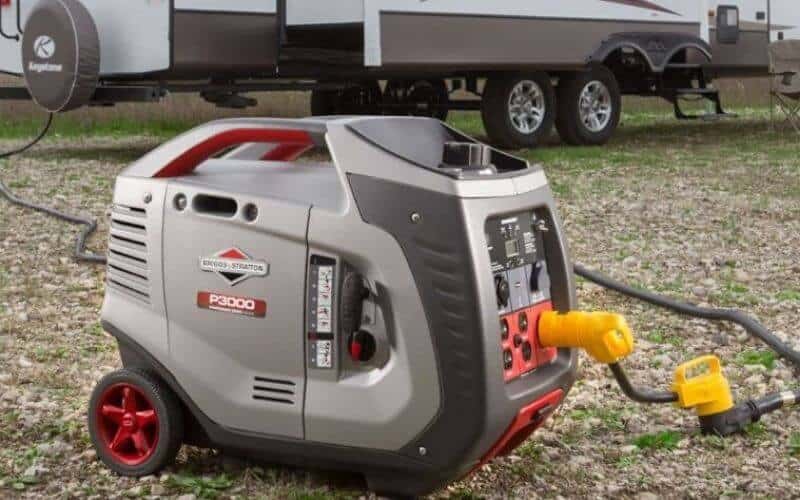
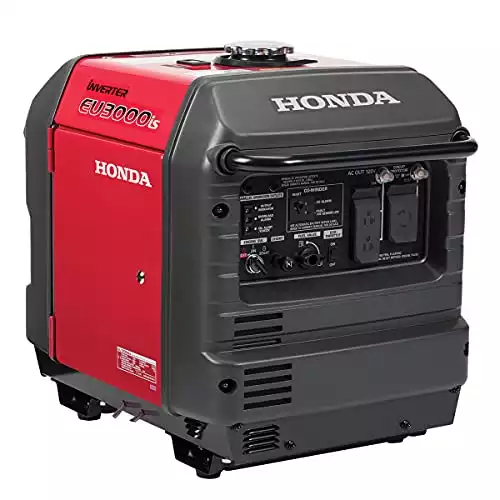
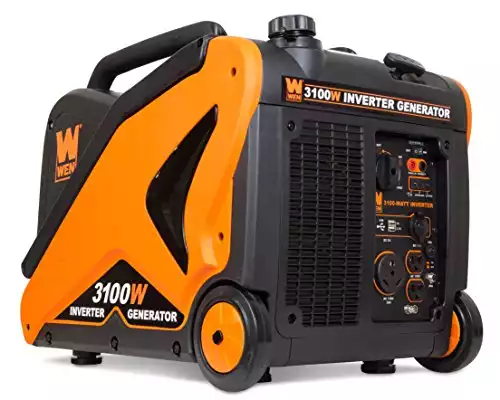
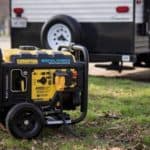
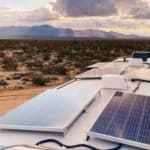
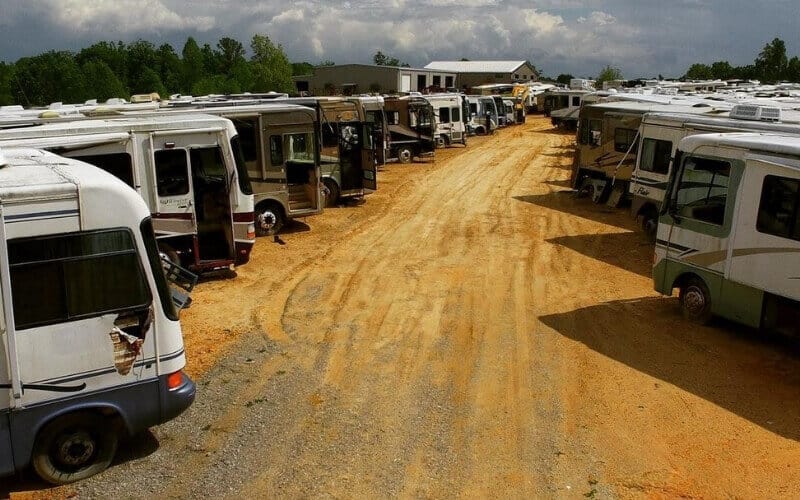
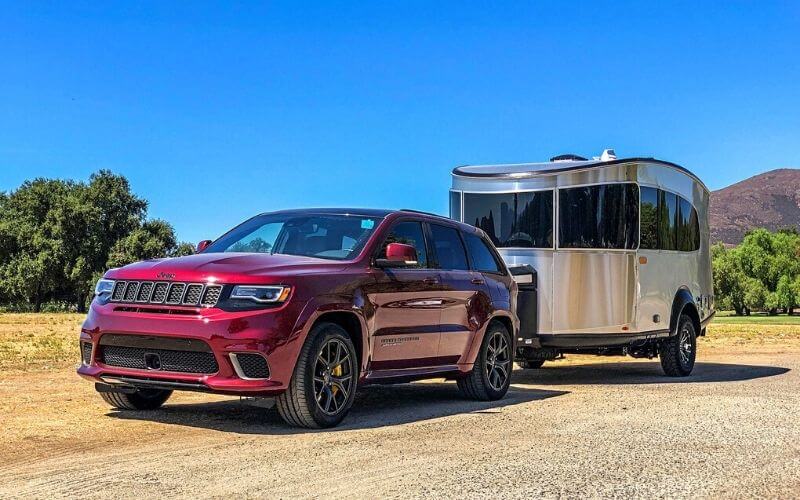
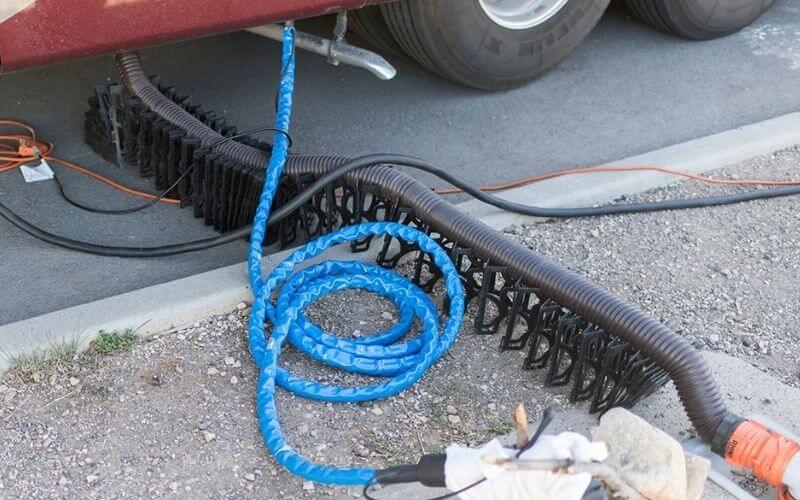
4 Comments
Gilbert
3 years agoThis was a fantastic read. Thank you for taking the time to write such a thoroughly well written and unbiased article.
Me and my wife just recently renovated a 26′ Rockwood travel trailer and we plan on living in it while we are traveling around Texas deciding if it’s somewhere we’d like to live.
Aaron Richardson
3 years agoLove to to it helps you somehow 🙂 anyway if you need and ideas where to park your trailer here are few ideas which might help https://www.rvingknowhow.com/where-can-i-park-my-rv-to-live/
Robert maness
3 years agoI already have a 6250 running amp Briggs and Stratton storm generator. The 30 amp plug is 120/240 can I use it for my 30 amp rv? If so how?
Kimberly Hannon
2 years agoI just bought an 89 Tiffin Allegro and I need more information 4 the generator I have 110 Amp. I have a refrigerator, microwave A/C, 2 tv’s, lights throughout cabin. I plan to live in it full time in CT. This is my first RV and I appreciate any help. Also can the generator be solar powered as well. Thank you Kimberly